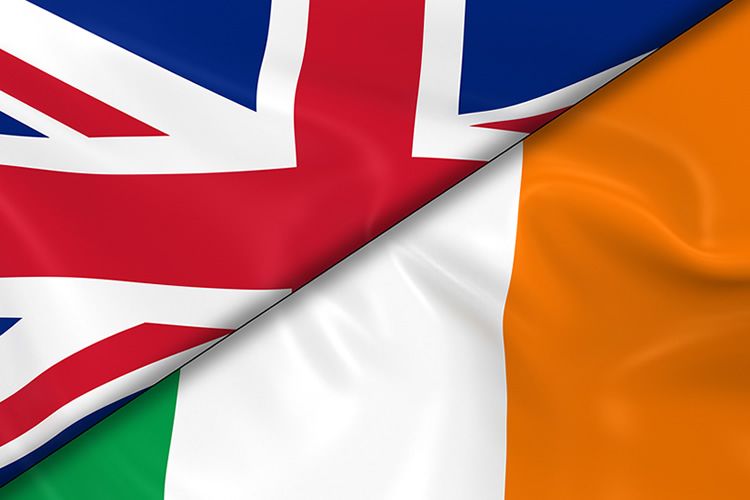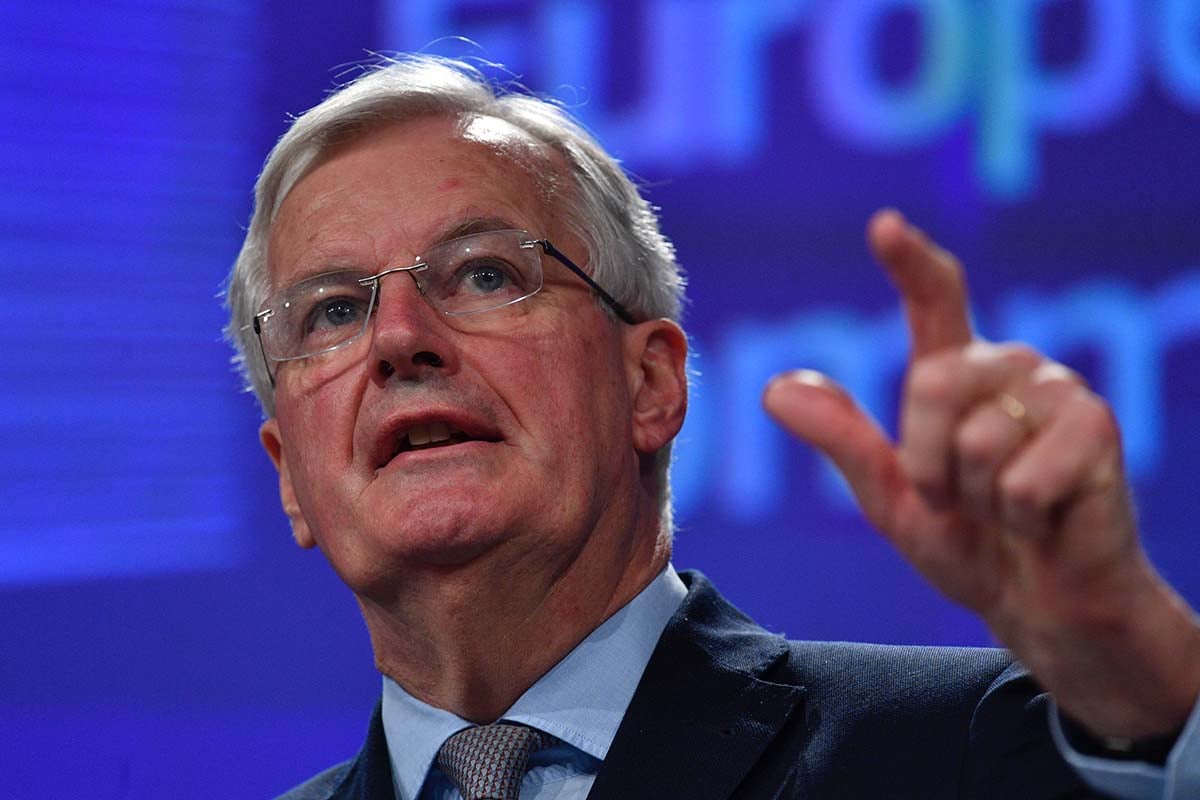Markets Underpricing Risks to the Pound of Brexit Talk Breakdown Over Irish Border
- Foreign exchange markets might be guilty of underpricing risks posed by Irish border meltdown
- EU trying to shoe-horn UK into customs Union
- Only compromise for both sides is 'intelligent' border

In March the Pound discernibly swung higher, rising from 1.11 to 1.15 against the Euro and, after the EU agreed to a Brexit transition deal which included an extra 21 month extension period, giving it more time to hammer out a comprehensive trade deal with the EU.
The agreement countered fears that the UK could crash out of the EU after the official deadline in March 2019 without a deal, causing probable economic chaos in the process as the relationship would default to a basic WTO template, with high tariffs and excessive red-tape.
Yet it now turns out even the supposed pledge to extend the deadline to 2020 may be under threat as one of the troubling loose-ends of the Brexit saga starts to unravel the whole process and once again raises the spectre of the UK and EU crashing out of their existing relationship in March 2019.
This could have major implications for Sterling which has already fallen on growth fears after data showed the economy growing by only a sluggish 0.1% in Q1, and has the potential to knock the Pound even lower versus major counterparts.
The loose-end in question is the issue of the Irish border and over recent days it has grown to become the epicentre of a fresh storm of controversy threatening to engulf the fragile Brexit-deal house-of-cards.
It now appears that for a transition deal to go ahead the UK government must provide an adequate solution to the Irish border question before the EU meets to discuss the question in June, or at the latest by October when it votes to ratify terms of withdrawal.
https://www.poundsterlinglive.com/gbp-live-today/8915-pound-bad-week-got-worse-on-irish-border-question
As it currently stands the withdrawal agreement contains a 'backstop' clause that if the UK cannot find a solution to the Irish border problem a default of an open border will kick in, effectively making the Irish sea the new defacto UK border with the EU instead.
Clearly, this would not be an outcome supported by northern Irish Protestant unionists who owe more allegiance to mainland Britain than Ireland, and a further complication is the fact that the main unionist party, the DUP is propping up the May minority government.
The issue has once again risen to the fore, however, after the European Commission's chief negotiator Michel Barnier's recent visit to Ireland.

Michel Barnier, Image © European Union, 2018 / Source: EC - Audiovisual Service / Photo: Mauro Bottaro
At a summit, in Dundalk, Ireland, Barnier warned that lack of progress on Ireland could upset the smooth running of the transition agreement, and reminded the UK that if no solution could be found the 'backstop' would kick in, to keep the border completely unfettered and open.
The Irish Prime Minister Leo Vardhakar appeared to promote the idea that one way of solving Ireland would be for the UK to remain within the EU customs union as this would keep the border completely open.
He complained the UK government's own self-imposed negotiating red-lines which include not remaining in a customs union were preventing progress on the Irish question, saying, "If these are softened, the EU’s position will be flexible.”
Critics argue Barnier, Vardhakar and the EU are trying to 'shoe-horn' the UK into staying in the EU customs union, and Arlene Foster, the head of the DUP has said Barnier lacks sympathy for the unionist position.
The issue is clearly becoming a major sticking point in the negotiation process, with many attendant risks for Sterling which we believe foreign exchange markets are at present not taking full account of.
Advertisement
Get up to 5% more foreign exchange by using a specialist provider to get closer to the real market rate and avoid the gaping spreads charged by your bank when providing currency. Learn more here.
Horns of a Dilemma
The problem for the UK government is that it will find it extremely difficult to arrive at a solution for Ireland without crossing at least one or other of its negotiating red-lines. Either this, or the EU will have to cross their red lines.
The UK has promised to keep the border open and yet the easiest way to keep the border open would be for it to remain a part of the customs union, which it has also pledged to leave.
A preferred solution put forward by members of the UK government is to have a 'light-touch' border scenario using technology to reduce intervention and searches.
"The UK also believes it is possible in this phase to establish working principles for the movement of goods, energy and wider cross-border cooperation that will underpin the development of technical solutions as part of the negotiations on the future relationship between the UK and the EU," reads the UK's official position paper on the Irish question.
However, the EU appear unwilling to consider the proposal saying it
"While it may be possible to implement a modern, light-touch border which utilises technology and preclearance in order to avoid lengthy border checks and minimise the economic impact, the Government has pledged to avoid any physical infrastructure at the border whatsoever – either between Northern Ireland and the Republic of Ireland, or between Northern Ireland and the rest of the UK," says Paul Hollingsworth, senior UK economist at Capital Economics.
A light-touch border has many backers and may well be a viable solution, however, the most likely outcome, according to Hollingsworth is for the UK to remain in the EU customs union thus leaving the border open.
"Just as fundamental support for GBP has taken a knock, Brexit may have thrown up something for bulls to ponder: the rather knotty question of the UK/Irish border," says BNY Mellon's Neil Mellor.
Mellor believes the UK entering a customs union with the EU would be supportive for Sterling, "in truth, the market has shown willingness to support the government’s progress on Brexit; but there is little doubt that by dispensing with abstruse and protracted negotiations, such a U-turn would be well received in the market."
"Something has to give here, and it is possible that it is the red line over the customs union. If the UK ended up remaining in some form of the customs union (it may end up being called something else to make it more politically palatable) then that would limit the ultimate impact that Brexit will have on the UK economy in the future, for better or for worse," says Capital Economics' Hollingsworth.
Such an outcome would probably, on balance, support Sterling, at least in the short-term because it would be viewed as a 'soft Brexit' deal, and avoid the possibility of a cliff-edge crashing out to WTO tariffs. It would also supply a more discernable and quantifiable end result helping companies and markets to plan for the future and in the process reducing uncertainty.
Continuing as a member of the custom's union will have many detractors inside the government, however, and undermine the true 'spirit' of Brexit, which is the establishment of full autonomy from the EU. It is likely to draw much criticism and may even be deeply unpopular as it might be framed as the 'worst of both worlds', so even though it is a possible outcome it is not an easy path.
There are very real fears that a capitulation by the UK into a customs union would lead to the eventual ousting of Theresa May by her party who are opposed to such an arrangement as it would see the UK subject to EU trade regulations and ban the UK from striking its own trade deals.
In short, it will not fly with Brexiteers and May will feel their wrath if she tries to push this solution.
As such there still remain severe headwinds of uncertainty from the challenge of Brexit. Thus from the perspective of Sterling, there are sizeable risks which, if markets begin to account for, could add to growing downward pressures:
As long as uncertainty continues the Pound will remain pressured.
The risk now is that the Ireland border question could threaten a no-deal Brexit again in March 2019, which would be disastrous for Sterling. Add to this a slow-down in economic growth as evinced in Q1 and the Bank of England (BOE) will have even less reason to raise interest rates.
Compare that to the Fed who are on course for six or even seven more rate hikes and the divergence in interest rates cannot but increasingly inflict pain on GBP/USD.
A Potential Way Forward
The only potential compromise we can see working is via the establishment of a 'clever' border - more or less along the lines of the UK's preferred position.
This will allow both parties to maintain their red lines. But, it will require some concessions from Brussels, who have proven to be incredibly strong-willed thus far in negotiations.
It could be that the UK threatens to walk away, which in turns pushes a Brussels compromise that simultaneously doesn't appear to be a crossing of a red line.
The important point for Sterling traders to observe is that the currency is likely to come under pressure when the UK threatens to walk away, but will ultimately recover when the EU compromises.
Advertisement
Get up to 5% more foreign exchange by using a specialist provider to get closer to the real market rate and avoid the gaping spreads charged by your bank when providing currency. Learn more here.
